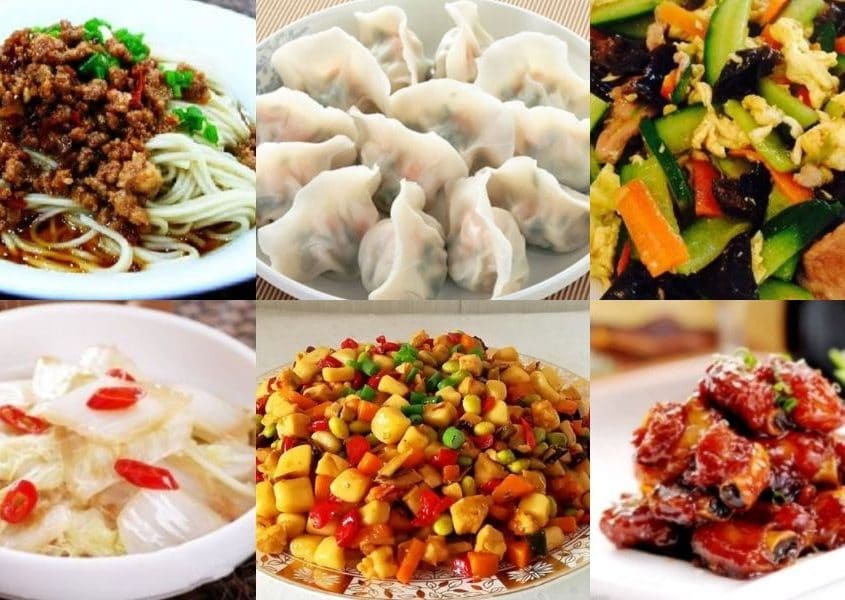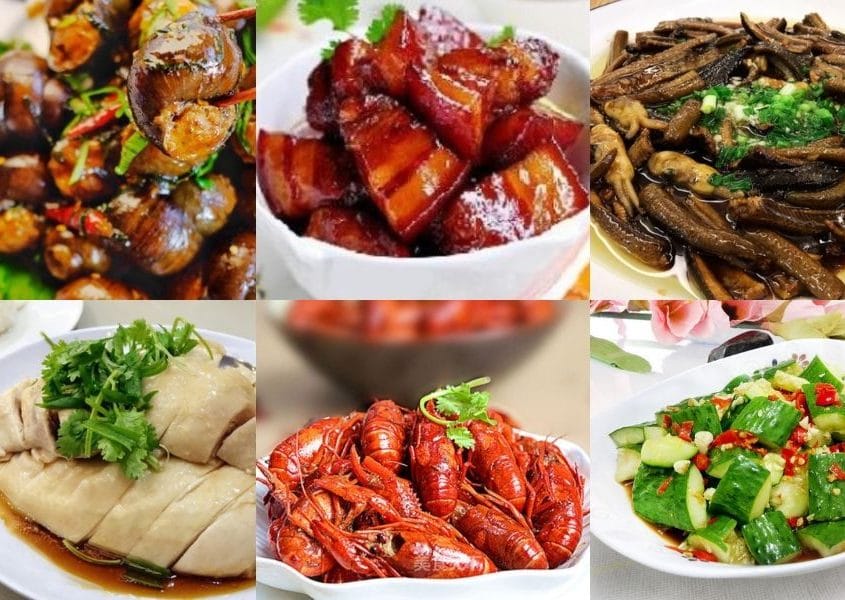Embark on a tantalizing culinary expedition with native Chinese language meals, the place original flavors and traditions intertwine to create a gastronomic tapestry this is each various and delectable. From the bustling streets of Beijing to the serene canals of Suzhou, each and every area boasts its distinctive culinary heritage, formed via geography, local weather, and cultural influences.
Sign up for us as we delve into the defining traits of native Chinese language delicacies, exploring the origins of cherished dishes like Peking duck and Sichuan scorching pot. We will discover the cultural importance of those culinary creations and hint their evolution during the centuries.
Native Chinese language Delicacies

Native Chinese language delicacies contains a various vary of culinary traditions and flavors that experience developed over centuries. It’s characterised via its use of unpolluted components, daring flavors, and a focal point on balancing contrasting textures and tastes.
Origins and Influences, Native chinese language meals
Native Chinese language delicacies has been formed via a mix of cultural influences, together with the ones from the Hakka, Cantonese, and Teochew communities. Each and every of those teams has contributed distinctive components, cooking ways, and dishes to the native culinary panorama.
Well-liked Dishes
- Wonton Noodles:A vintage Cantonese dish that includes egg noodles served in a flavorful broth with wontons (meat-filled dumplings).
- Char Siew:A roasted beef dish marinated in a candy and savory sauce, ceaselessly served with rice or noodles.
- Claypot Rice:A hearty dish cooked in a claypot, most often consisting of rice, meat, and greens.
- Bak Kut Teh:A natural soup dish made with beef ribs and quite a lot of herbs and spices.
Cultural Importance
Native Chinese language delicacies holds nice cultural importance, serving as a bridge between other generations and an emblem of circle of relatives and group. Meals performs a central function in gala’s and celebrations, and conventional dishes are ceaselessly handed down from one era to the following.
Regional Permutations: Native Chinese language Meals

Native Chinese language meals reveals outstanding range throughout areas, reflecting the affect of geography, local weather, and cultural traditions. From the highly spiced flavors of Sichuan to the Cantonese emphasis on contemporary components, each and every area boasts its distinctive culinary identification.
Geographical elements, reminiscent of get right of entry to to components and cooking ways, have performed a vital function in shaping regional diversifications. Coastal spaces, with considerable seafood, have advanced a wealthy custom of seafood dishes, whilst inland areas depend extra on native produce and meats.
Local weather has additionally influenced regional cuisines. The new and humid local weather of southern China has liked dishes that emphasize cooling components, reminiscent of greens and end result, whilst the chillier northern areas have advanced hearty and warming dishes, reminiscent of stews and soups.
Regional Dishes and Their Distinctive Options
The next desk showcases one of the maximum iconic regional dishes of native Chinese language meals, highlighting their distinctive options:
| Area | Dish | Distinctive Options |
|---|---|---|
| Sichuan | Mapo Tofu | Highly spiced and numbing taste from Sichuan peppercorns, cushy and silky tofu |
| Cantonese | Steamed Fish | Contemporary and gentle flavors, emphasis on retaining the herbal style of the fish |
| Beijing | Peking Duck | Crispy pores and skin, soft and juicy meat, served with skinny pancakes and hoisin sauce |
| Shanghai | Xiao Lengthy Bao | Steamed soup dumplings with a skinny pores and skin and flavorful filling |
| Yunnan | Crossing the Bridge Noodles | Rice noodles served in a flavorful broth, crowned with quite a lot of components |
Questions Ceaselessly Requested
What are the defining traits of native Chinese language meals?
Native Chinese language meals is characterised via its use of unpolluted, native components, conventional cooking ways, and regional flavors that mirror the varied cultural influences of China.
What are some in style native Chinese language dishes?
Well-liked native Chinese language dishes come with Peking duck, Sichuan scorching pot, Cantonese dim sum, Shanghai furry crab, and Xi’an dumplings.
What’s the cultural importance of native Chinese language meals?
Native Chinese language meals is deeply rooted in Chinese language tradition and traditions. It’s ceaselessly served all the way through gala’s and celebrations and performs a central function in circle of relatives gatherings and social occasions.

